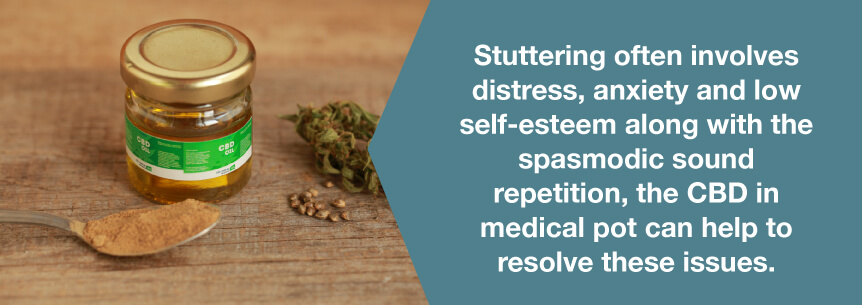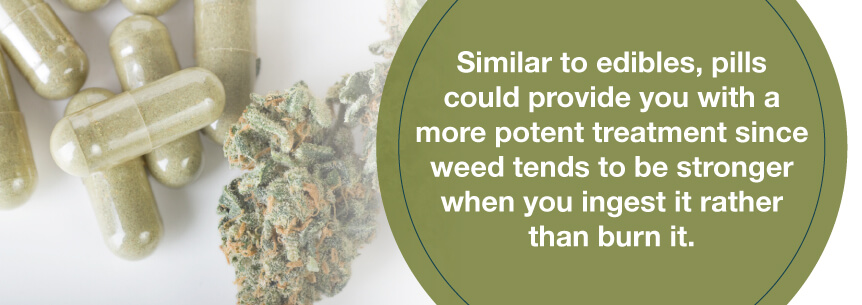
We all have moments when our speech doesn’t flow as smoothly as we’d wish. Individuals who stutter tend to get stuck on certain words and sounds making maintaining a conversation difficult. This speech impediment can make individuals feel nervous and uncomfortable. It’s important to know you’re not alone — and there are treatment options, including the possibility of including medical marijuana into your therapy regimen.
Medical marijuana for stuttering is said to relax the muscles, which remove the speech disruption when you speak, so you stutter less. Some stuttering symptoms and signs weed may help with include:
Stuttering often involves distress, anxiety and low self-esteem along with the spasmodic sound repetition. The CBD in medical pot can help to resolve these issues, so we can deduce CBD will likely assist with stuttering challenges. Therefore, it could be worth you trying medical cannabis for stuttering.
Find A Doctor Find A Dispensary

Some studies have already shown CBD can help reduce the severity and frequency of tics. For instance, one study in 1998 showed patients with Tourette Syndrome (TS) who used marijuana experienced an outstanding 80 percent decrease in their tics.
Another study involved two patients with treatment-resistant TS and incapacitating stuttering-like disfluencies in a speech from palilalia and vocal blocking. The study showed when clinicians gave subjects either dronabinol (synthetic THC) or medical weed, the patients experienced significant improvement in things like:
Probably the best cannabis strains for stuttering are those used to tackle anxiety and to relax you and your muscles. Some relaxing strains you could try include:
Some good anxiety-fighting strains to try include:
You’ll probably want to experiment a little to find the strain or strains that work best for your stuttering and other symptoms.
There’s no clear-cut method all patients should use. Each patient differs in their ideal ingestion method, and everyone’s biochemistry responds differently to different THC and CBD ratios and routes of delivery.
You should discuss your administration options with your cannabis doctor and the type of relief you’re looking for so they can help come up with a marijuana treatment plan tailored to you and your particular stuttering symptoms.
Some common medical marijuana administration routes include:
Cannabis beverages and edibles offer you a slower delivery method. Your digestive process will allow the herb to pass through various organs before you get the actual dose, meaning it could take around an hour for the cannabis to travel to your brain from your liver before you get a thorough amount of THC and/or CBD in your system.
Vaping seems to be a better and healthier choice than smoking weed. Whether flower or oil, you heat up the active ingredients instead of burning them, leaving you with a potent gas or vapor dosage. It produces quick effects which are great to help calm down your anxiety, facial tics, vocal tics and other symptoms.
Medical cannabis for stuttering sprays and tinctures work well if you want to avoid the lung irritation and other potential risks of smoking. Using a sublingual application, you placing the mixes of oil, extracts, glycerin and alcohol under your tongue. As with edibles, tinctures can take a while before you begin feeling their effects.
Many individuals are now choosing to receive their medical cannabis in pill form. Similar to edibles, pills could provide you with a more potent treatment since weed tends to be stronger when you ingest it rather than burn it. Suppositories produce similar effects with your colon except they bypass your stomach enzymes altogether.

Obtaining medical marijuana for stuttering begins with finding a cannabis doctor to evaluate you. After you receive your medical marijuana card, you can shop at different dispensaries to find the strains and products that suit you best.
Here at MarijuanaDoctors.com, you can browse through our medical marijuana physician listings to find a cannabis-certified doctor who can determine your eligibility. Use our resources page to learn more about how to use our site to help you begin treating your stuttering with cannabis.
Find A Doctor Find A Dispensary
Stuttering, also commonly referred to as stammering, is a communication and speech disorder in which the individual has speech disfluencies. You can identify stuttering by the repetition of syllables, sounds and words interrupting the normal flow of speech. You’ll find people who stutter know precisely what it is they want to say but have difficulty producing sentences.
Stuttering links to tension due to embarrassment, anxiety or fear. This physical tension stutterers experience when flexing speech muscles include:
Many different patterns of stuttering exist, ranging from mild to severe. Individuals with this speech disorder find it challenging to communicate with other people. As a result, the quality of their life is often affected as well as interpersonal relationships.
At the onset, a speaker may not realize they have a stuttering issue. After all, there are times when we all have experienced an interruption in our flow of speech. If you find you’re experiencing such a disfluency often, then it’s a sign you likely have a speech disorder.
Some specific symptoms of stuttering you may have noticed in yourself or someone else include:
Stutterers experience great stress when speaking. This stress and anxiety will convey itself in the form of:
Stammering habits can vary from day-to-day. There are times when a stutterer is quite fluent, and then there are times of increased disfluency. Stuttering can get worse when a person is excited, angry, stressed or under pressure.
No one knows the exact cause of stuttering. However, medical experts consider stuttering to be part of a neurological condition, which explains the disruption in the regular production of speech. For some people, stuttering can be an inherited condition, while in others it’s mainly triggered by emotional and situational factors. The Stuttering Foundation reports genetic components have a role in a percentage of stuttering cases.

Sudden onset stuttering is usually neurogenic, which means the brain has trouble sending signals to the nerves, muscles or areas of the brain controlling speech. This can be due to brain trauma, drug abuse, epilepsy or even chronic depression.
Health experts typically group speech disorders into three main categories:
About one percent of the world’s population stutters. This works out to be approximately 70 million people worldwide and three million Americans. Stuttering can affect both men and women of all ages.
According to the National Institute on Deafness and Other Communication Disorders (NIDCD), stuttering commonly affects young children. Children between the ages two and six are more likely to start stuttering as they develop language skills.
Roughly 75 percent of children outgrow stuttering. The remaining 25 percent who continue to stutter will have to deal with this communication disorder through adulthood.

Though stuttering is not inherited in the standard sense, there may be some genetic component. Nearly two-thirds of people who stutter (60 percent) have a family member who also stutters.
Of course, stuttering isn’t something new. There are historical examples of stammering. This speech impediment dates back to the B.C. era. In fact, Moses, a biblical prophet, struggled with stuttering. When God sought to use him to fulfill his purpose, Moses told him he was “slow of speech” and “slow of tongue.”
In mid-300 B.C., a Greek statesman named Demosthenes had a speech disorder. He worked alongside a well-known actor of that time called Satyrus to improve his stuttering. Supposedly, Satyrus had Demosthenes put pebbles in his mouth and using a mirror had him practice formal speech.
This communication disorder can have an impact on an individual’s well-being, especially when it’s left untreated. Stammering has no physical effects. However, it can affect emotional and psychological health.
Stutterers typically experience emotional and psychological difficulties. They often suffer from low-self esteem, social anxiety and fail to develop relationships with others. People with severe stuttering tend to withdraw from others and isolate themselves. They experience depression and in some cases may inflict harm upon themselves.
Although there is no cure for stuttering, there are several treatment options available. An individual should be medically evaluated to determine a diagnosis for effective treatment. Most treatment options aim at teaching skills and strategies implemented during oral communication with no side effects.
Some common forms of treatment used to help people who stutter include:
Often, people who stutter have to undergo speech therapy. Fluency-shaping therapy and stuttering modification therapy are frequently used to teach:
Speech therapy can be time-consuming, but is often covered by health insurance.
Electronic fluency devices is another treatment method for stuttering. An individual will wear an earpiece to provide auditory feedback by echoing the speaker’s voice, so they feel like they’re talking in unison with someone else. This is supposed to help eliminate stuttering. While some people respond well to this treatment, it has proved to be ineffective for many. Electronic devices for stuttering can be expensive and researchers don’t know their long-term effectiveness.
Recent research into why stuttering occurs has revealed the possibility that brain activity in individuals who stutter is different than in people who don’t. Brain images have shown differences in the function and structure of the circuit governing speech production.
Other recent developments in the study of stuttering include the discovery of three stuttering-associated genes, but more research is needed before the medical community can apply their understanding to improvements in speech.
Also, a few studies have shown the bundle of nerve fibers connecting the motor and sensory parts of the brain is disorganized in people who stutter. Such slight abnormalities in this area are what cause speech disfluency.